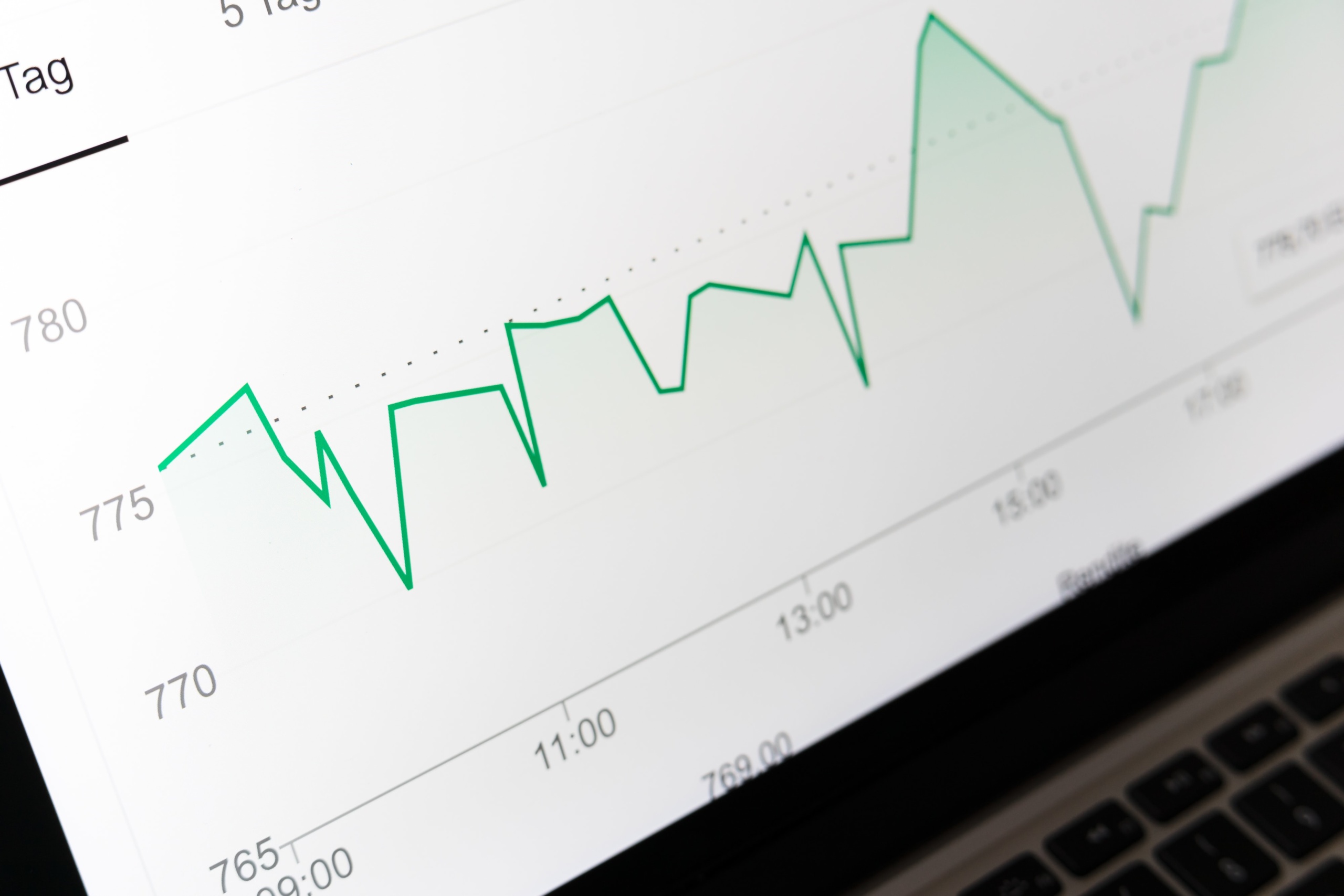Episode 73 of the All In Podcast is a must listen for startup founders. I sent this summary to our Magma Partners portfolio yesterday, and am sharing publicly. Listen to the first 54 minutes. You can skip the politics part at the end.
The speakers are angel investor Jason Calacanis as the moderator, Chamath Palihapitiya who runs his own money, Craft VC’s David Sacks, and Brad Gerstner who is a public markets/later stage private investor.
Here’s a summary of their thoughts, along with some of my own thoughts (in line in italics) of how this might affect Latin America and startups in our portfolio.
TL;DR “(or didn’t listen in this case)
We were on a “red bull high” for the past 2 years fueled by money printing and low interest rates the government set because of Covid.
This printing led to 30-50% higher valuation multiples compared to the 5 year public markets moving average.
The stock market pullback is the market moving back to normal. It had to happen. Now we’re more back to normal, not playing with artificial money.
Add a war and inflation uncertainty and raising rates, and the market is more complicated.
When do we bounce back? No bouncing back to the last 18 months, which were the outlier. We can bounce back to the 5 year average, but we still need more clarity on the war, interest rates and inflation.
Startups need to manage their cash and their burn.
If you raised at a high multiple, you could grow 3-5x and get the same valuation.
If you are not “default alive” (can get to profitability or control your burn and margins), you will be a price taker and risk getting down rounds or bad terms.
Founders should start measuring their burn multiple: What is the ratio of Burn:incremental ARR added. This is for SaaS, but you can modify it for other biz. Adding $1 of new added ARR for:
- $1 or less of burn = elite
- ‘$1-2 of burn = good
- $2-3 = not great
- $3+ = terrible
Founders should think about setting a Burn Multiple as a main KPI they track. If you have to make a trade off from growth to burn, use the burn multiple to make sure you don’t have bad, inefficient growth, which will lead to more burn.
The earlier you are as a startup, the less this affects you now, the later, the more it affects you.
In a bull market, investors go crazy and pay the same for a shit company as they do a great one.
In a down market, there’s a flight to quality: only the best companies get funded on good terms, many won’t do well. If you’re not in the top bucket for the VCs on the cap table, you might struggle to get money.
My opinion:
In LatAm, expect some of the late stage, low revenue, “not great” businesses to have issues, and down rounds, or to be propped up with not great terms by current investors.
Expect some of the new VCs into LatAm to not follow on, and to be more conservative allocating capital to the region.
Good companies that continue to execute will keep getting funded, but they might not get the best terms.
All VCs are looking at their portfolio and deciding which ones to follow on, you should be asking your investors how they think about you, how they think about follow ons, if anything changed in their thesis, especially their Latin American thesis.
It’s time to be a wartime CEO, stop focusing on vanity metrics. As Chamath put it, “clapping and hope are not options.” Get back to executing and solving the problem you set out to solve.
Long Summary:
We just went through a repricing of public markets, which leads to a repricing of private markets, with a 3-6 month lag. This repricing is a normalization of multiples and valuations from the “red bull high” that was 30-50% higher than the 5 year average of multiples for growth internet stocks.
This repricing had to happen to get us back to normal, to get us off the sugar high. We can’t continue to play with artificial money, low rates, low inflation from the government response to the pandemic. We don’t get to play with artificial money anymore.
We also have a war and high inflation to deal with, which means more uncertainty because we don’t know what interest rates will look like.
My comments: In Latin America, VC investment grew 30x since 2014. We only really saw truly crazy behavior the past 6-9 months. Latin America’s “bad case” new normal is likely near this level of VC funding at early stage, but with potential significant changes to late stage markets for the mid term. We’re still on day 1 in Latin America, with massive amounts of catch up that still needs to happen, and very bullish on LatAm tech in the long run.
Why do interest rates matter?
Because the risk free rate of return is higher when rates are higher, so people don’t pay high prices for big risk and allocate less money to risk assets.
The 10 year rate has been 2.5% for a long time, so later stage/public markets investors can estimate a discounted cash flow model easily. Now with higher rates, investors have to raise the discount rate, which automatically lowers the multiples. Since there’s uncertainty, investors don’t know if they should be using 2.5%, 4%, 5% or something else entirely, which leads them to take “risk off” approach.
Today, internet company public market multiples are below their 5 year average multiple, which is a big correction. Much of the internet publics are down 15-85%. That’s a huge drawdown and a huge repricing, which will have to affect private markets.
Federal reserve interest rate guidance
The Fed is going to try to be at 2% negative rates, which means they expect inflation to be 4.3% and 10 year at 2.3%.
This is a big change, because previously the Fed tried to keep real rates positive, which would mean that if inflation was 4.3%, you would expect interest rates at 4.8% or similar.
If rates moved to 4.5%, you should expect growth multiples to move 30% more down from where they are today.
If you think we will have 3-4% interest rates, the discount rate goes up, and the multiples go down. The Fed’s negative real rate guidance is a bullish signal for the markets.
Late Stage VC Badly Mispriced
Late stage venture ($500m valuation or more) is badly mispriced. Valuations could be 50-60% down from rounds raised last year.
Instacart example: $40B valuation, down round to $24B. Their public comps are down 50-70%, so they had to get reset.
If you are the nth player in a game where big competitors have taken lots of money, you are gonna have to pay a high price for your money when you raise again. Instacart is already the 6th or 7th mover, what happens to all the others behind it?
If you can’t control your margin and burn, you are going to raise on someone else’s terms. You will be a price taker or get unfavorable terms.
If your public market comps are not building successful businesses, you might be in trouble. If your public market comps are “gas guzzling machines” you’re gonna pay a heavy price when you raise.
Examples: 15 min delivery businesses, neobanks, lending fintechs
Instacart could be cheap, or still overpriced by 25-50%. We don’t know yet.
My comments: In Latin America, if you’re not the biggest 1-2 in your industry, or in a smaller country, and the biggest ones in public markets and the biggest, well known ones in LatAm start to have issues, you will likely have issues too. It will be interesting to see what solid businesses that haven’t raised nearly as much money do. There will likely be good, profitable exits for these founders, and a chance to win the market from some of the more well funded companies if they can make it through the valley of death.
Late stage companies will likely do down rounds to go public
Many late stage ones will do down rounds in order to go public.
Compare the public markets SaaS valuations to privates. Valuations have reverted to the historical mean, the most recent 2 years is a sugar high, it’s not normal. We are below historical averages for some SaaS, but not others.
When interest rates are 0%, people pay generally 8x top line revenue for pub market SaaS/internet company.
The rule is that for every 1% interest rate increase, you need to decrease the valuation 15-20%. So if interest rates go to 3%, you have to reduce the valuation by 30-40% minimum, assuming the startups continue to execute really well.
If rates go up, or your company slows down, things can change.
Multiple expansion hides many sins for startups. Multiples were higher than they ever have been, and now they are going down. Most pub market IPOs will be below last valuation and some will be way way less.
My comments: It will be interesting to see how this affects Latin American unicorns, or $300M+ startups that raised at very high multiples. The ones to be on the lookout for are startups that have very high burn and haven’t had a path to profitability. They will likely need to exercise a different muscle going forward. Some will do it successfully, others likely won’t.
How did this happen? Investors were sloppy
Many investors have been irresponsible/sloppy during the bull market, and it gets even crazier in the late innings of the bull market, which we just came out of.
If there are ratchets and down rounds, employees, early investors and founders get wacked on dilution.
If you optimize for valuations and take weird terms like ratchets and liquidation preferences, founders, employees and early investors can get in big dilution trouble when they try to raise again, or exit.
If you’re a not great company and have a high valuation, you might never grow into your valuation.
Examples are neobanks, delivery apps.
If you’re arbitraging interest rates, which is what lots of lending/neobank businesses do, there’s new risk. If the cost of capital rises with rising interest rates, your business can get crushed. Highlighted Brex as a potential issue.
Founder salvation is healthy gross margin, healthy contribution margin, path to profitability, and the Paul Graham default alive. If you are not, you are a price taker, which means likely bad valuation or bad terms.
Capital intensive businesses are going to be riskier now.
My comments: This rate compression could be less hard on Latin America, where the spreads are much much higher than in the US/Europe. But rate compression is why we don’t like super high interest rate lending startups, along with the morality of it. Lending at high rates can make you lazy, which means when you get a higher cost of capital and margin compression, you might be in trouble if your competitors actually know how to lend. We might see some high rate lenders face stiffer competition from lenders who have earned their stripes lending at lower rates and smaller margins. We might also see this rate compression not hurt LatAm much at all.
What should startups do? Lengthen runway, raise more if you can still get good terms, watch your burn multiple.
Lengthen runway, be more capital efficient. Multiples for SaaS might have gone from 100x to 20x. Some fintechs might have had multiples even higher.
You need to grow into the valuation, make money last 2-4 years, unless you want a down round.
My comments: As Lux’s Josh Wolfe put it, you need to build a fortress balance sheet. Husband your cash. If you can be strong going into this period, you set yourself up for a big win. In Latin America, be on the lookout for new US funds that came to Latin America that change their thesis. Be on the lookout for acquisition opportunities. Cash will be even more important in Latin America.
What will VCs do?
VCs will divide portfolio companies into buckets:
1. Low quality companies that likely won’t make it across the chasm, high burn, bad unit economics, non-fortress balance sheets.
2. High quality, but have cash, low burn, can figure out profitability, high growth, but multiples are down because of public markets multiple compression
VCs will likely fund less risky companies for a bit as they have a “flight to quality.” The best companies will get more money, the non-best will have issues. If you’re a “nice to own” rather than a “must own” you will likely struggle unless companies want to not raise from smart investors for 3-5 years.
In public markets, the best/most/reliable companies will start to get that money. In public markets, it’s FAANG + Snowflake and maybe a few others, everyone else who is “nice to own” and has been getting smashed.
In private markets it is likely to be even worse.
My comment: I think anything that happens in US markets will be even stronger in Latin America. I think this is likely not good news for underestimated founders who have already had trouble raising. The perceived flight to quality will likely be elite status founders. We fund both elite status and underestimated founders. If you’re an underestimated founder, keep on executing. And don’t forget to talk to us!
Private Market investment for $500M+ valuation companies are pretty locked up, should start to get price discovery near the end of the year
Brad Gerstner “late stage venture is closed.” We are in a buyer/ seller standoff. Founders don’t want to admit that new pricing exists and at some point when they need money, we’ll get real price discovery.
We’re only 20% of the way through it mentally. Price discovery is not happening until companies need to raise a new round, or go public, which is likely later this year.
Private markets don’t work unless there’s a new buyer, or a bag holder.
Those investors can put money into public markets with liquidity with less risk and lower multiples.
Some are leaving the private market like D1. Tiger still seems in the market, but lowering valuations, repricing.
If you’re a $500M or lower valuation you can be ok. But the later stage you are, the harder it is.
Why? S&P returns 8% per year, which investors use as the risk free rate of return. Late stage investors need 20% per year to take the risk now. Why would you take private market risk, at higher multiples than public markets?
My comments: I would expect whatever happens to later stage LatAm companies to trickle down to earlier stage startups, but the earliest stage should keep getting money.
Catching up, growing into multiples
If you raised at 100x multiples, and multiples are 20x, you need to grow 5x to get the same valuation.
Startups need to lengthen the runway to grow into valuation, don’t take a down round if you can avoid it. Psychology is bad. Can be a death spiral.
It’s easier said than done. It’s hard to do, since you need to invest money to make money and grow. So increase burn to grow, which is really hard, while burning can lead to the death spiral.
Tiger/Altimeter/D1 are super smart. they will make good deals for themselves and their LPs.
When music is on, you gotta dance. Now we see who is good, and who is taking advantage of the market dynamics. Time to sharpen the pencils and execute.
In an up market, companies are valued by Growth.Growth.Growth.
In a bad market, its now Growth, burn, margins.
It’s time to do real tradeoffs. Before, just thow cash out there to make growth happen, now growth must be efficient. Founders need to ask: can we get to numbers to raise a new round.
Snowflake’s frank slootman: “Silicon Valley is filled with companies that are dead and don’t even know it.”
It’s time to be a wartime ceo, not peacetime ceo.
Slootman: When wartime comes,”I wanna run the field, I wanna press the advantage. If you don’t have that now, you are in trouble. Still time to make changes and husband your cash.”
CAC might go up 20-40% since facebook and google will raise prices because they can, are a monopoly. and they need to hit their numbers.
We are still in the beginning of unwinding the distortion. People suspended disbelief, no governance, no unit econ, big markups, and there’s big issues.
My comments: Latin American companies with fortress balance sheets will run the field, be able to hire the best talent, make acquisitions or out compete their competitors who didn’t have good numbers/balance sheets. Start making decisions now to avoid problems down the road and put yourself in the best position possible.
Burn Multiple: every startup should track it
Burn multiple: How much do you burn for each incremental ARR you generate?
Companies need to manage cash flow, keep growing.
Founders should start measuring their burn multiple: What is the ratio of Burn:incremental ARR added. This is for SaaS, but you can modify it for other biz. Adding $1 of new added ARR for:
- $1 or less of burn = elite
- ‘$1-2 of burn = good
- $2-3 = not great
- $3+ = terrible
Many startups are using burn multiple as a governor to grow.
They might max out burn multiple of 2 for the quarter and invest more or less to get there, instead of just spending whatever they can to get to 3x growth.
Some startups are saying “we won’t spend more to chase bad growth. They will do a tradeoff where lower burn wins over growth at all costs. Most companies should be doing this. Don’t stall the plane.
My comments: Non-SaaS companies should figure out their metric for burn multiple and modify it for their industry.
Many not great, inexperienced investors who don’t help, be sure to pick the best investors
Many investors just aren’t good, not qualified to be investing. Their incentive is to get deals out the door.
Be careful who you listen to. Look at experienced operators and/or experienced investors.
A VP of xyz unicorn that might not be that great could be a bad sign too, since, don’t really know much about investing or doing real deals. Their advice could be bad. Or just non-existent.
We’ve seen lots of status games around investing from VCs, and also founders which harms the market, don’t fall into them.
If you’re taking the term sheet, look at the investor to see if that person is really qualified to help you. If not, you’re gonna take a big risk.
Lots of founders have picked investors using only the highest valuations. Be careful if that’s what you’ve done. We’re now in a selection game, both for VCs picking the best companies and founders picking the best VCs.
Ask your investors which bucket you’re in
Are you a must own vs. eh, i’d like to own them
They’re a flight to quality.
No new normal. This is back to the future. The reset is painful. Investors take risk down, pull in the risk curve, and concentrate on the best stuff. Investors might make a lower number of big bets in quality.
Clapping and hope is not a strategy. Gotta stop and just execute.
My comments: If you can pick your investor, be sure to pick who will actually help you. Don’t just optimize for price. Pick the best possible partner who can help you, within reason. If you have to take money to stay alive, optimize for clean terms.
When does the cycle begin again? When dispersion starts happening again
Dispersion stops happening in the run up. People pay the same price for shit companies as amazing companies.
First step is dispersion returns. Flight to quality. Then recovery starts to happen, and more predictability. Then the next level of companies that are riskier start to get more money until we get back to no dispersion of shit companies vs. good companies way out on the risk curve.
When do we bounce back? No bouncing back to the last 18 months, That was the outlier. We can bounce back to a 5 year average, we still need to know what happens with war/rates/inflation.



